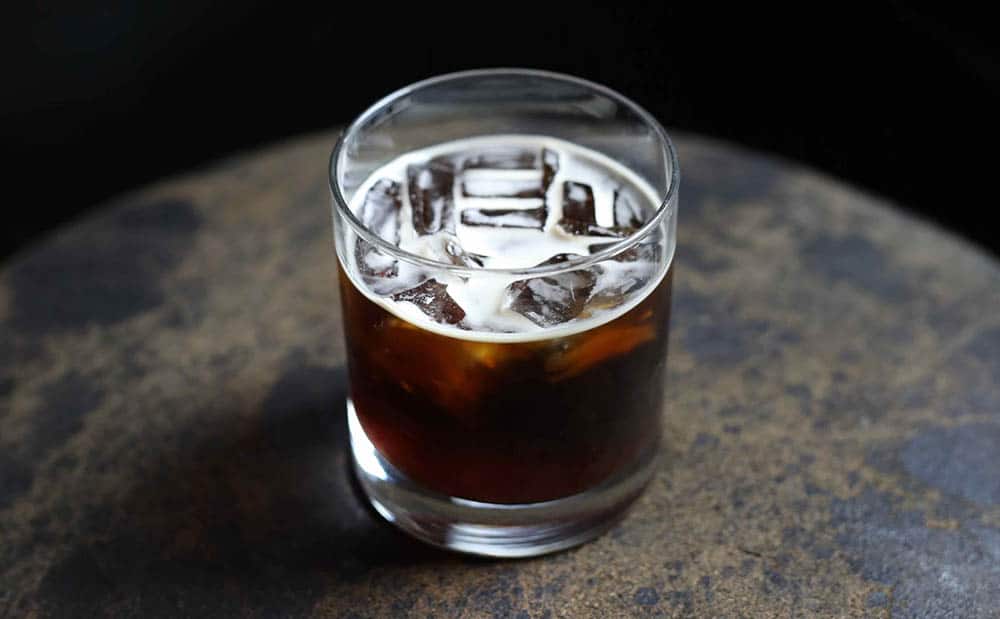
How to...
It’s only one of the finest cold refreshments ever invented. Welcome to the world of cold brew coffee.
Firstly, although you can call it iced coffee, it’s important to make the distinction between cold brew and other cold coffee drinks. If you walk into a high street coffee shop and ask for an ‘iced coffee’, you’ll likely be served an iced Americano: hot espresso poured into iced cold water so it cools rapidly, with optional milk added.
Cold brew is different. It involves steeping coffee grounds in cold water from 12-24 hours, and results in an entirely different drink.
It tastes amazing, and it’s noticeably different to other methods of brewing. Firstly, it results in lower acidity in the brew. Acidity is part of the complex flavour profile of coffee, so it’s not always something you want to eradicate, but as a personal flavour preference, cold brew might be just for you. (Especially if acidic coffee gives you heartburn or other issues.)
If you’re imagining the taste of a regular black coffee left to go cold – think again.
Cold brew fundamentally alters the method by which the water extracts sugars, acids, oils and flavours from the grounds. The reduced acidity brings out a different flavour and texture than regular brewing – often sweeter, smoother, and more delicate. Subtler, lighter tones are brought out with cold brew, and you won’t be knocked off your feet as can happen with a double espresso.
And despite its slightly niche following (at least in this country), it’s actually one of the easiest ways to make coffee. Coffee plus water, in a jug, overnight in the fridge, bosh, goodnight.
You can buy it pre-made in bottles, but it’s more fun (and fresher) to make it yourself.
(It is possible to buy cold brew coffee concentrate, too. This works nicely if you want to save shelf space in the fridge, as you’ll pour it into a glass over ice then add water or milk after. So you’ll get more drinks out of a bottle than buying or making cold brew outright, but it won’t be as fresh as making it yourself. Making this yourself is possible, too – just follow the below instructions, but with a higher coffee to water ratio to make it stronger.)
You don’t need fancy equipment, and can pretty much get by with a mason jar. But specialised equipment makes it easier.
You can buy cold brew coffee pots online for as little as £15. They’re a glass jug with a filter basket and a lid. All you have to do is:
The reason the basket is there is for easy removal of the grounds the next day. If you don’t have a specialised cold brew coffee pot, you can make do with a mason jar, and simply pour out the contents the next day, through filter paper, into your drinking receptacle. Or else you could use a fine mesh strainer or anything else that’ll catch the grinds.
If you’re looking for a stronger, darker result, you can either put a higher amount of grinds in, or leave it brewing for longer. All worth experimenting with, to find your personal preference. Some say you can reuse the grinds for a second round of brewing, but we’re not convinced you’ll get the full flavour experience that way.
Coarse ground is going to be the safest option for you. While each filter is different and you might have to try a few different ones, going for the coarsest grind means the coffee won’t make it through the filter and cause a sludgy brew. (Or, of course, you can always buy whole beans and grind them yourself at home.) If you’re ordering a Neighbourhood Blend, you’ll want to choose a ‘cafetière grind.
Flavour-wise, it’s entirely up to you. The way cold brew brings out flavours differently to regular brew means it’s worth experimenting with. Whether it’s chocolate, citrus or fruity undertones, they’ll all come out a little differently with the cold brew method.
We could recommend waiting for a sunny day, but the truth is, it’s a treat in any weather. Here’s a few ideas:
Something to note – the process of cold brewing can cause a decent amount of caffeine to be released into the drink. This means more than a few cups might leave you seriously wired, so it’s not recommended as an evening drink. This skit from comedy cop drama Brooklyn 99 illustrates the dangers of going overboard on the cold brew. Yep yep yep yep yep.
(And be careful if you’re making cold brew concentrate – it’s the diesel of the cold coffee world, and watering it down is highly recommended.)
So that’s about it – no specialist knowledge needed. Just a jar, some coffee, water, and a fridge. With the sun finally starting to shine, what’s better than a smooth, iced coffee?
Want to see more? Check out how we brew cold brew on our Instagram